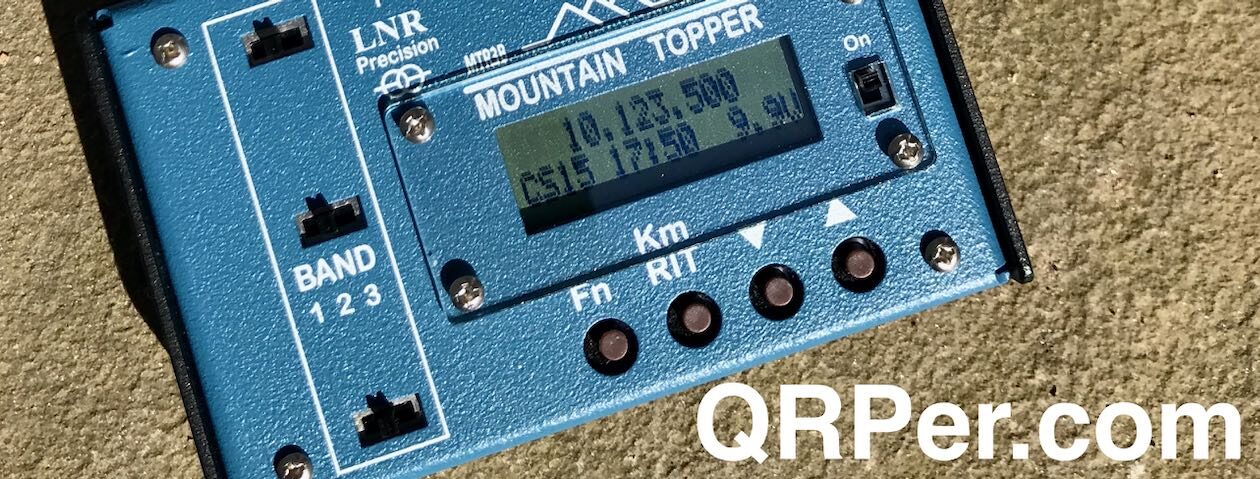On February 9, 2025, my good friend Vlado (N3CZ) and I headed out to Pisgah National Forest (US-4510) near Looking Glass Falls for a joint POTA activation.
This is Part 1 of our activation — and while I typically write much longer field reports, I’m still in the final stages of Hurricane Helene debris removal around our property.
To keep things moving, I’ll keep this one short and sweet–a postcard field report length. I truly appreciate everyone’s understanding!
Pisgah National Forest (US-4510)
 The weather couldn’t have been better for our outing — crisp, cool air with bright sunshine filtering through the trees. It was one of those perfect days where you feel lucky just to be outside, let alone playing radio with a great friend.
The weather couldn’t have been better for our outing — crisp, cool air with bright sunshine filtering through the trees. It was one of those perfect days where you feel lucky just to be outside, let alone playing radio with a great friend.
 Our activation video below captures the entire activation from Vlado deploying the antenna, to setting up the radio gear and both of our activations.
Our activation video below captures the entire activation from Vlado deploying the antenna, to setting up the radio gear and both of our activations.
 Vlado kicked things off with his trusty Elecraft KX1 hooked up to an end-fed half-wave he built himself.
Vlado kicked things off with his trusty Elecraft KX1 hooked up to an end-fed half-wave he built himself.
After he wrapped up his activation, he handed the controls over to me. I logged 41 contacts in 39 minutes — the bands were lively, and the little KX1 was working like a charm. (Golly I love this radio!)
 We stopped the video there to wrap up Part 1, but we weren’t quite finished yet. We switched to a different radio and kept the POTA fun going for a while longer — stay tuned for Part 2 next week, where we dive into a new setup and share more of the adventure!
We stopped the video there to wrap up Part 1, but we weren’t quite finished yet. We switched to a different radio and kept the POTA fun going for a while longer — stay tuned for Part 2 next week, where we dive into a new setup and share more of the adventure!
Gear:
 Note: All Amazon, CW Morse, ABR, Chelegance, eBay, and Radioddity links are affiliate links that support QRPer.com at no cost to you.
Note: All Amazon, CW Morse, ABR, Chelegance, eBay, and Radioddity links are affiliate links that support QRPer.com at no cost to you.
Radio
- Elecraft KX1
Antenna System and Throw Line
- QRPGuys Portable No Tune End Fed Half Wave Antenna
- ABR Industries 25’ RG-316 cable assembly with three in-line ferrites (Use Coupon Code ABR10QRPER for 10% Discount!)
- Weaver arborist throw line/weight and storage bag
Key
- UMPP-1 Paddles by GM0EUL
- Key cable: Cable Matters 2-Pack Gold-Plated Retractable Aux Cable – 2.5 Feet
- Senrog Bench Block (weighted key base)
Battery
Accessories
- Anker Soundcore Mini Speakerand shielded audio cable
Camera and Audio
- DJI OSMO 4 action camera with Joby Telepod Sport Tripod
- DJI Wireless Microphones
Logs
QSO Map
Here’s what this five-watt activation looked like when plotted out on a QSO Map. Please note that all of the blue lines are the QSOs from this activation on 20 meters.Click on the map image to enlarge.
Activation Video
Here’s my real-time, real-life video of the entire activation. As with all of my videos, I don’t edit out any parts of the on-air activation time. In addition, I have YouTube monetization turned off, although that doesn’t stop them from inserting ads before and after my videos.
Note that Patreon supporters can watch and even download this video 100% ad-free through Vimeo on my Patreon page:
Click here to view on YouTube.
Thank you
Thank you for joining me during this activation and for understanding why I’m keeping the field report portion on the short side!
I hope you enjoyed the field report and my activation video as much as I enjoyed creating them!
 Of course, I’d also like to send a special thanks to those of you who have been supporting the site and channel through Patreon, and the Coffee Fund. While not a requirement, as my content will always be free, I really appreciate the support.
Of course, I’d also like to send a special thanks to those of you who have been supporting the site and channel through Patreon, and the Coffee Fund. While not a requirement, as my content will always be free, I really appreciate the support.
As I mentioned before, the Patreon platform connected to Vimeo makes it possible for me to share videos that are not only 100% ad-free but also downloadable for offline viewing. The Vimeo account also serves as a third backup for my video files.
Thanks for spending part of your day with us! Have a wonderful weekend!
Cheers & 72,
Thomas (K4SWL)
PS: Consider joining our QRPer.net discussion board! It’s an active community of radio operators who enjoy helping and supporting each other. It’s also the best place to ask any questions you might have about radios, field activities, antennas, or pretty much anything amateur radio. Click here to join.


















 ) In an effort to shake things up, I decided to use all three keys currently in my POTA kit: the VK3IL-design paddle gifted to me by Brian K3ES, the BaMaTech III paddle, and the CW Morse Pocket Single Paddle/Cootie key.
) In an effort to shake things up, I decided to use all three keys currently in my POTA kit: the VK3IL-design paddle gifted to me by Brian K3ES, the BaMaTech III paddle, and the CW Morse Pocket Single Paddle/Cootie key.
























































































